NASA's Mars helicopter has beamed back an otherworldly collection of photos and video from its first 4 flights
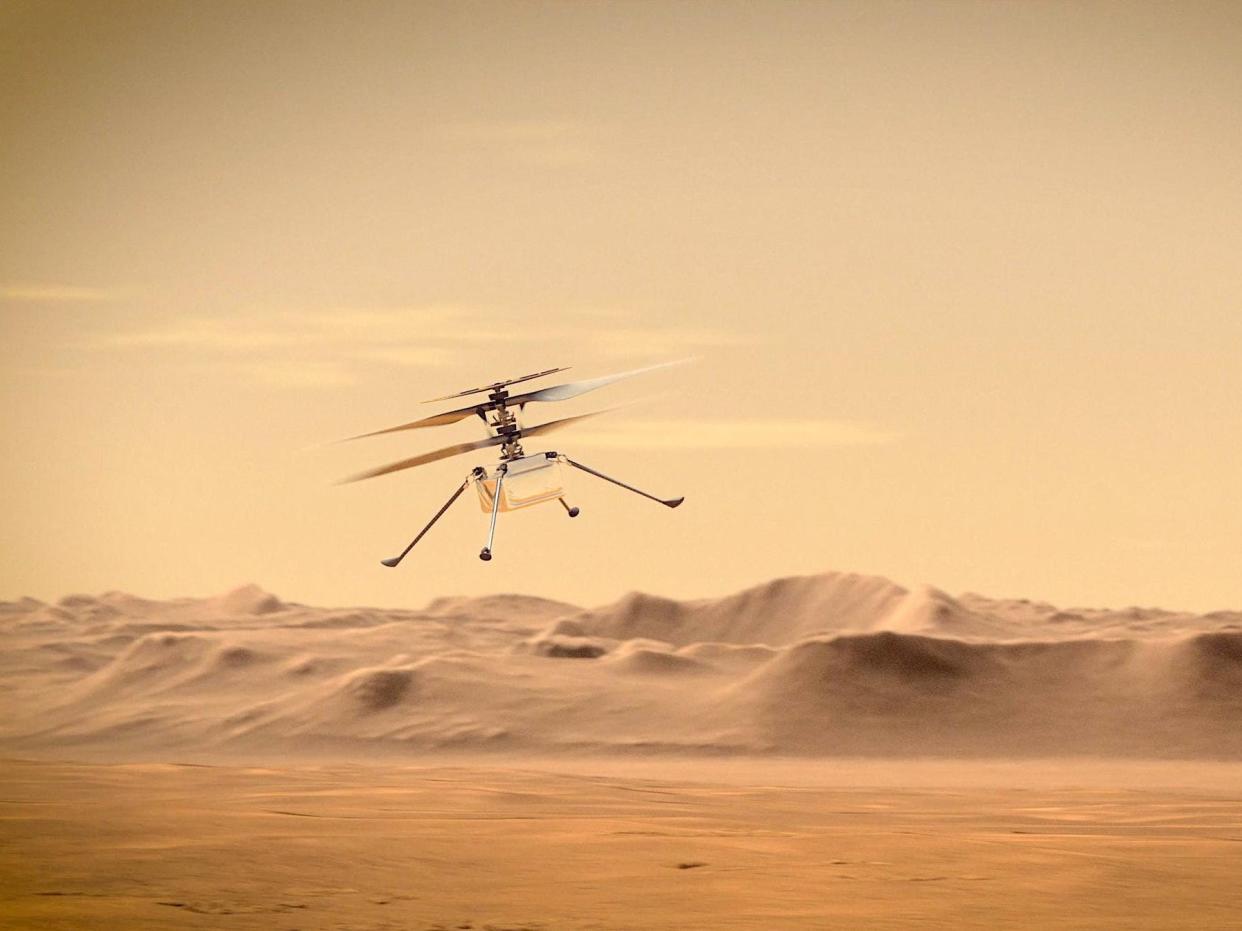
NASA's Ingenuity helicopter has completed four flights over the Martian surface.
Ingenuity made history last week when it completed the first controlled, powered flight on another planet. Each of the three subsequent flights pushed the helicopter higher, farther, and faster.
The helicopter has exceeded expectations, so NASA has given it a new mission: to scout and map uncharted terrain from the air.
Ingenuity has been snapping pictures of the Martian surface during all its flights, and NASA's Mars Perseverance rover has been capturing photos and videos of Ingenuity's aerial adventures from a nearby overlook.
Below are a selection of the best images and clips so far.
Ingenuity has soared over the Martian surface four times in the last 12 days. The 4-pound, tissue-box-size helicopter successfully completed its fourth flight on Friday.
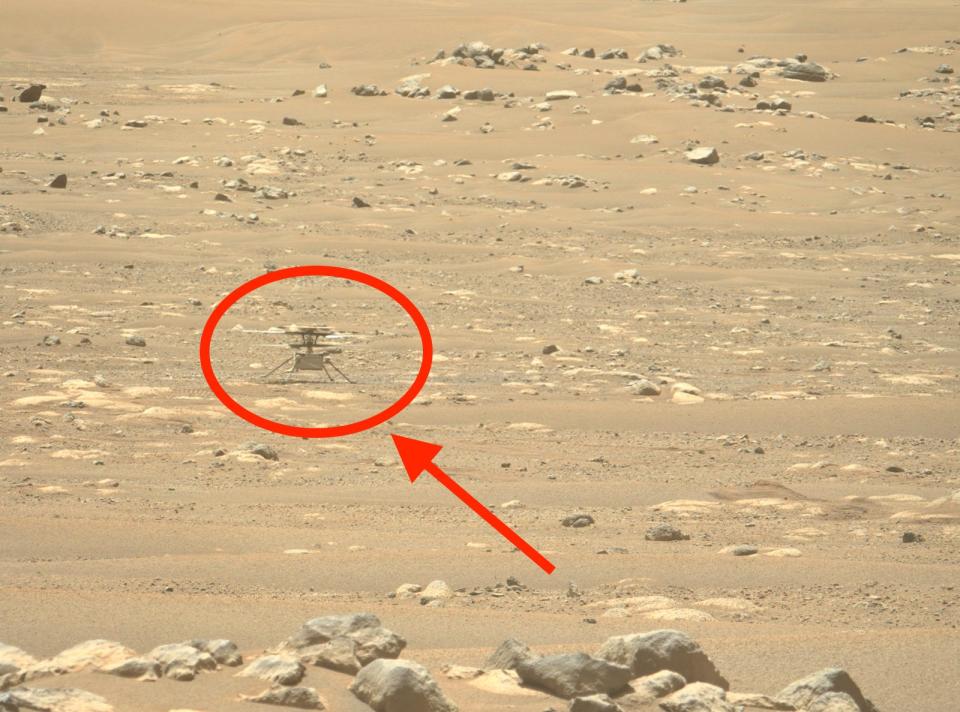
NASA hasn't released details of the flight yet, but the plan called for Ingenuity to climb 16 feet in the air and reach a maximum speed of 3.5 meters per second (7.8 mph).
The flight was originally scheduled for Thursday, but Ingenuity didn't get off the ground. A non-damaging software issue may have prevented the helicopter's flight computer from transitioning to flight mode.
If Ingenuity's fourth flight went as planned, it should have flown for 117 seconds. Ingenuity was programmed to travel south for around 436 feet, snapping photos of the Martian surface along the way, then turn around and land in its original spot.
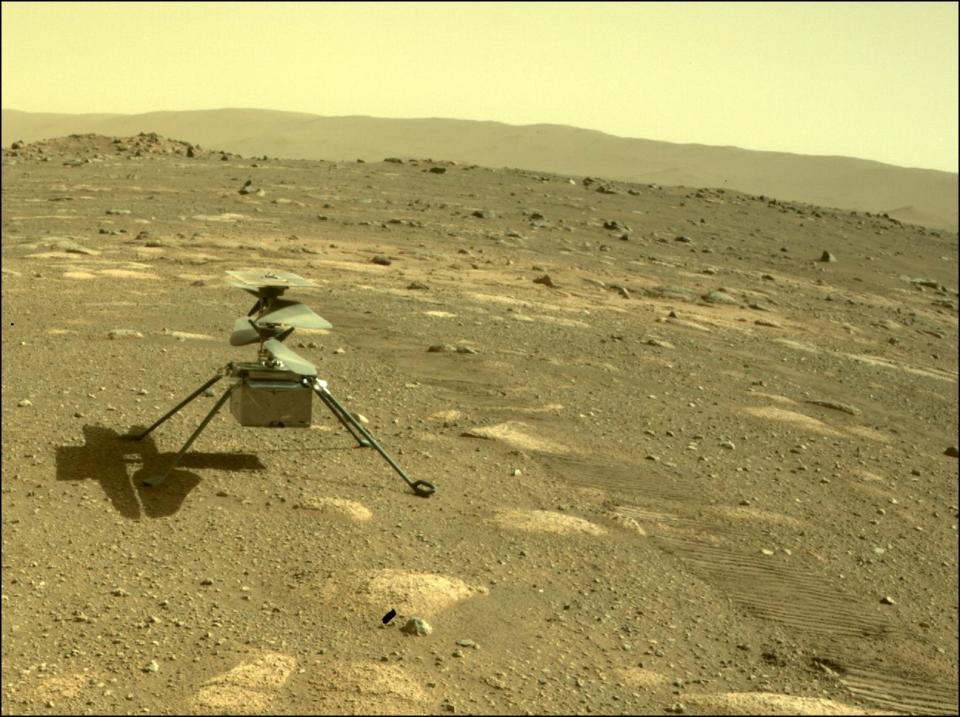
NASA scientists originally planned for the rotorcraft to attempt five flights in total, but Ingenuity has exceeded expectations so significantly that the agency is extending the helicopter's mission for 30 more days.
Using photos from Ingenuity's Friday flight, the NASA team plans to construct a 3D map of nearby terrain and pick a new landing spot for the helicopter.
On its fifth flight, which should happen in about a week, Ingenuity is expected to zip to that new airfield and touch down. From its new perch, it's set to conduct at least two more flights in May.
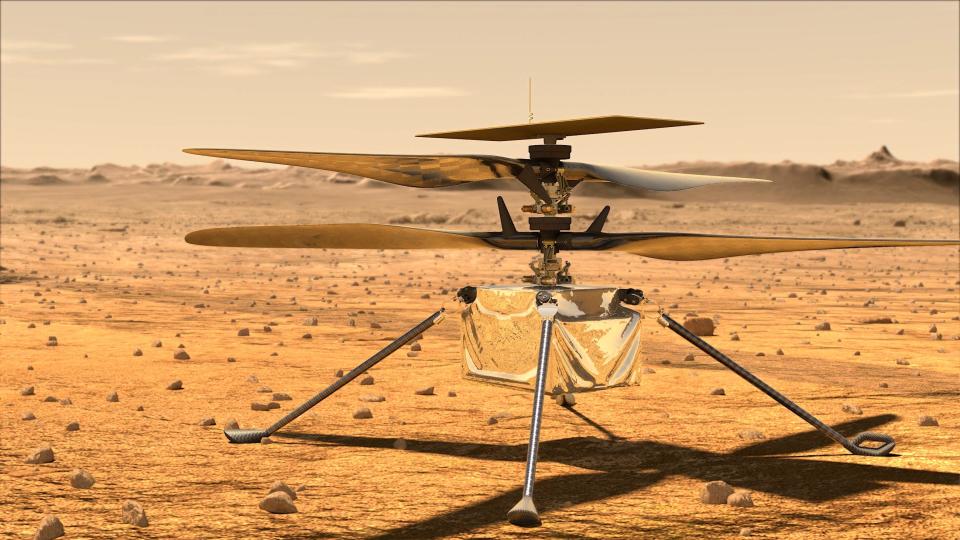
The goals of those sixth and seventh flights include scouting and mapping, observing interesting features of Mars from the air, and exploring rough terrain that a rover can't access.
Ingenuity's epic journey began eight months ago.
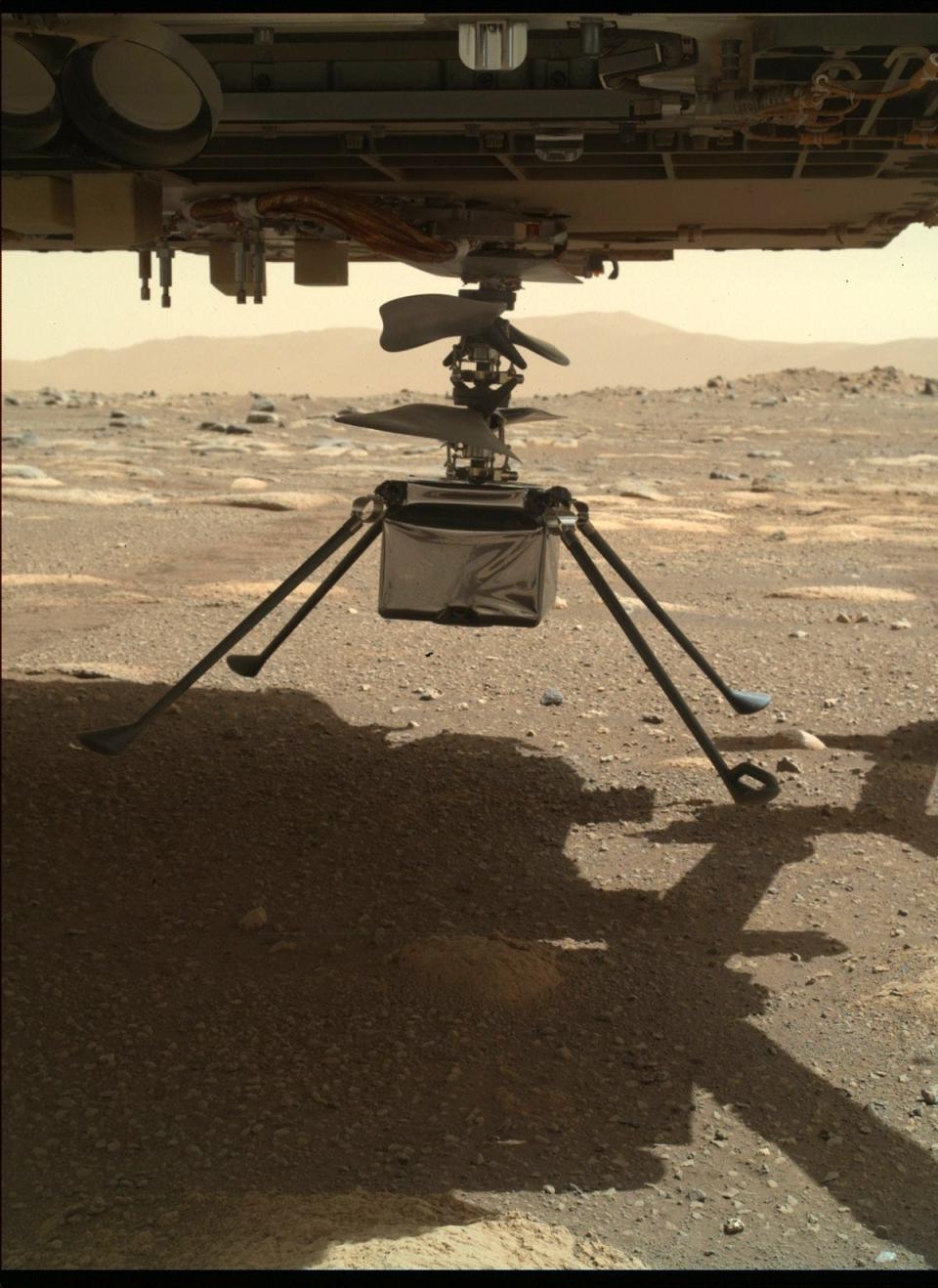
The helicopter, built by NASA's Jet Propulsion Laboratory, left Earth on July 30 in the underbelly of the agency's Perseverance Mars rover.
The two vehicles traveled 293 million miles together, landing in Mars' Jezero Crater in February. Perseverance set Ingenuity free in early April, dropping the helicopter onto the Martian surface so it could soak up sunlight to charge its battery and stretch out its rotors.
Ingenuity started to test its carbon-fiber rotor blades on April 8.
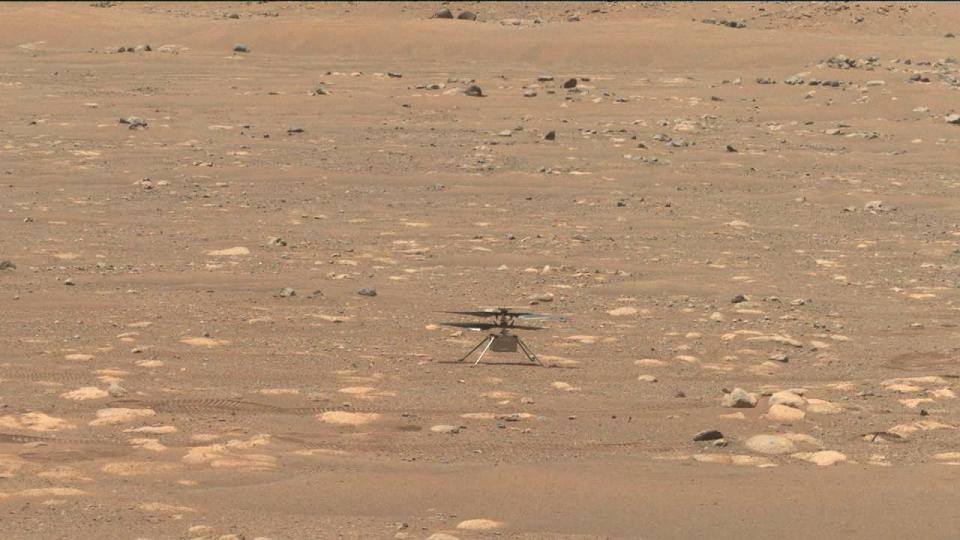
To get the helicopter off the ground in Mars' thin atmosphere, its rotors have to spin at a blistering 2,500 revolutions a minute. That's five times as fast as the blades of a helicopter on Earth.
The issue that prevented Ingenuity's fourth flight on Thursday might be related to a problem first found when the helicopter attempted a full-speed test of its blades on April 9, before its initial flight.
That test failed because Ingenuity's flight computer was unable to transition from "preflight" to "flight" mode. NASA engineers resolved the issue with a software rewrite, but they determined that the fix would successfully transition the helicopter into flight mode only 85% of the time.
The data that Ingenuity beamed back Thursday indicated that it may have hit one of the 15% of instances in which the software patch doesn't work.
After the software fix, Ingenuity made history on April 19 when it took flight for the first time. It hovered 10 feet above the Martian surface for about 30 seconds.
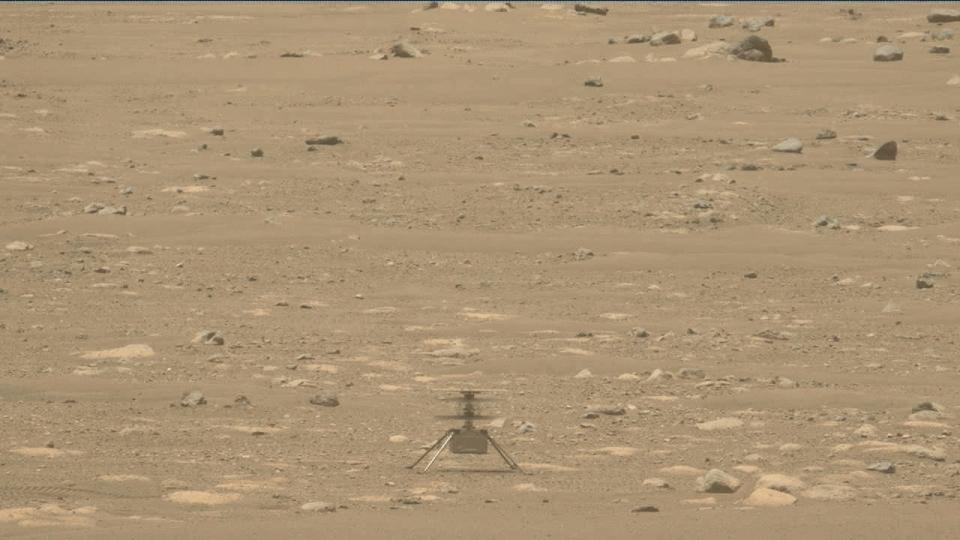
Never before had a spacecraft conducted a controlled, powered flight on another planet (though the Soviet Union's Vega missions did successfully fly balloons on Venus in the 1980s).
While 10 feet may not sound like much, hovering there is the equivalent of flying three times as high as the peak of Mount Everest, since Mars' atmosphere has a density just 1% of that on Earth.
Ingenuity's purpose on Mars was simply to show that rotorcraft technology could work in that kind of harsh environment. And it succeeded.
Two cameras on the bottom of Ingenuity recorded a still, black-and-white image of the Martian surface during that first flight - complete with the helicopter's shadow.
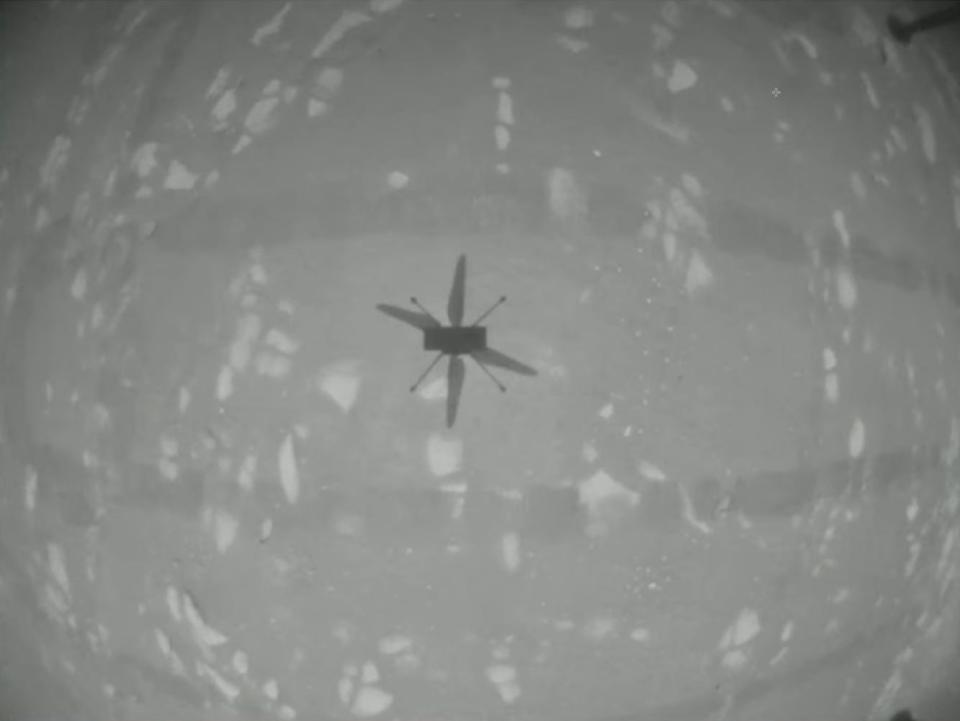
The helicopter's original chosen airfield in the Jezero crater measures 33 by 33 feet, or 10 by 10 meters.
A camera on the Perseverance rover captured the flight in exquisite color.
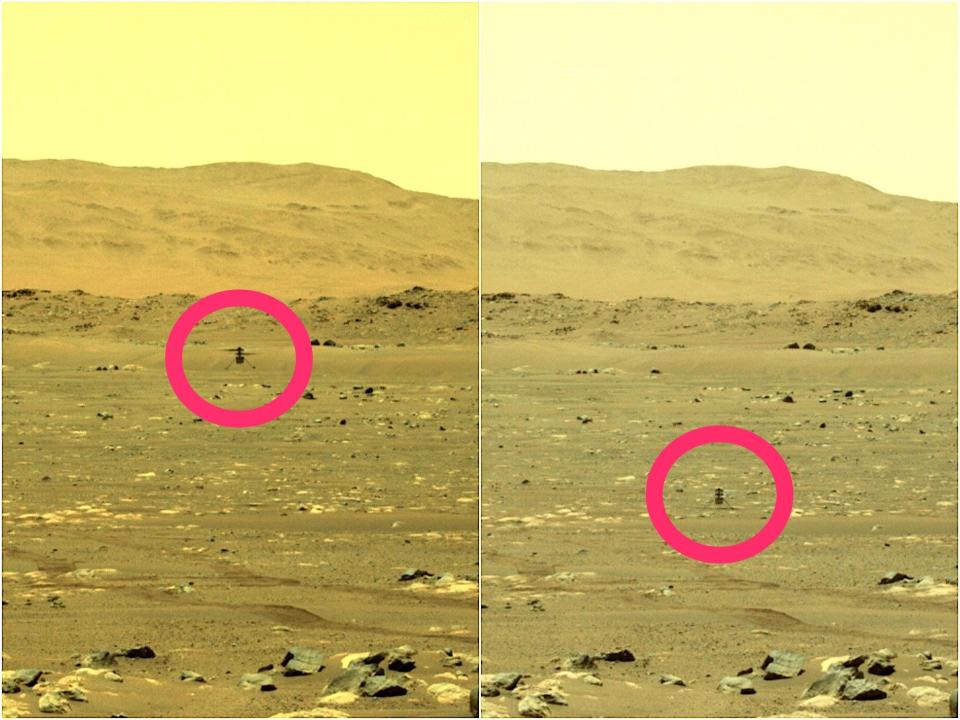
Perseverance moved to a nearby overlook to photograph and film the event.
Footage from a camera on Perseverance's mast revealed dust plumes from Ingenuity upon takeoff and landing.
—NASA JPL (@NASAJPL) April 21, 2021
These enhanced videos, NASA said, could help scientists better understand the Martian wind and how dust travels through Mars' thin atmosphere.
On April 22, Ingenuity flew even higher - 16 feet - and moved sideways for the first time.
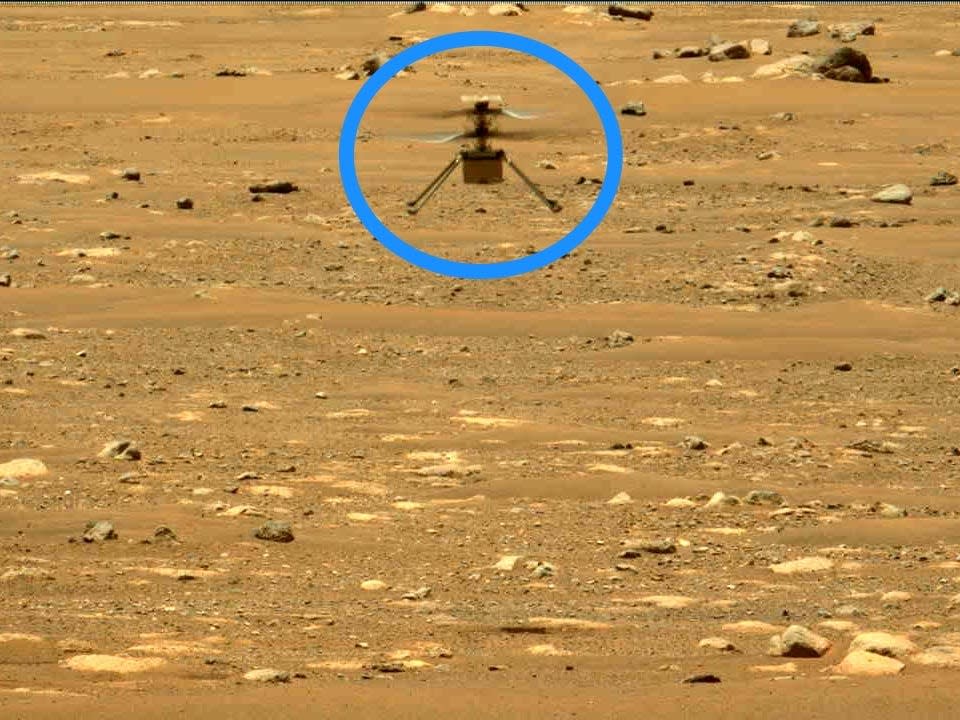
It hovered for 52 seconds and reached an airspeed of 0.5 meters a second, or 1.1 mph.
During that second flight, Ingenuity snapped its first color image of the Martian surface.
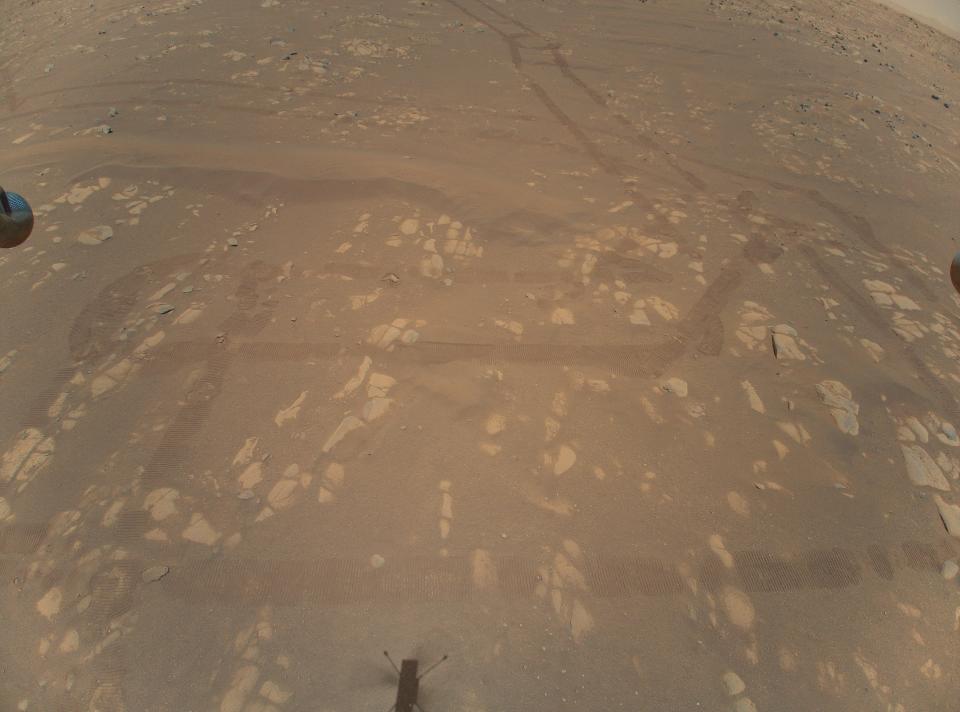
At the time it took this image — which shows tracks from the Perseverance rover on the ground below — Ingenuity was 17 feet in the air.
Ingenuity executed its third flight on Sunday, reaching an airspeed of about 4.5 mph.
The helicopter traveled 50 meters (164 feet) north — more than half the length of a football field — before returning to its starting place. The flight lasted about 80 seconds.
Ingenuity's third flight "was nothing short of amazing," David Lavery, the project's program executive, said. "With this flight, we are demonstrating critical capabilities that will enable the addition of an aerial dimension to future Mars missions."
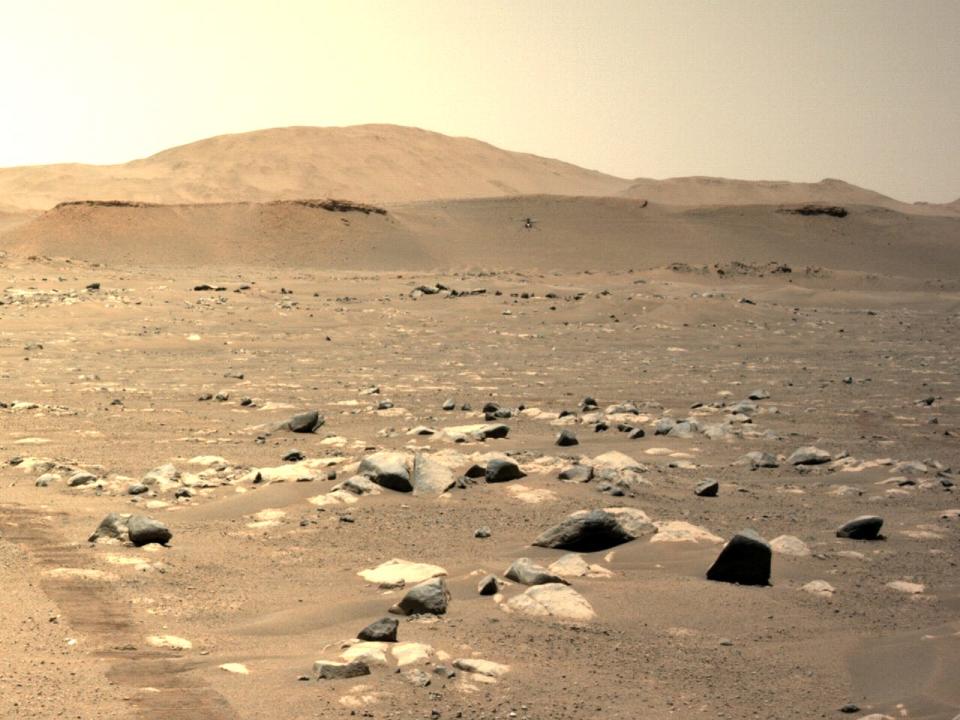
Space helicopters like Ingenuity could someday do reconnaissance for astronauts.
These space drones could fly "over ravines, down canyons, up mountains," Josh Ravich, the mechanical lead for the Ingenuity team at NASA's Jet Propulsion Laboratory, previously told Insider. "Even rocky terrain is fairly inaccessible to the rovers but much more easily accessed by a rotorcraft."
The helicopter even managed to spy on Perseverance from the air during its third flight.
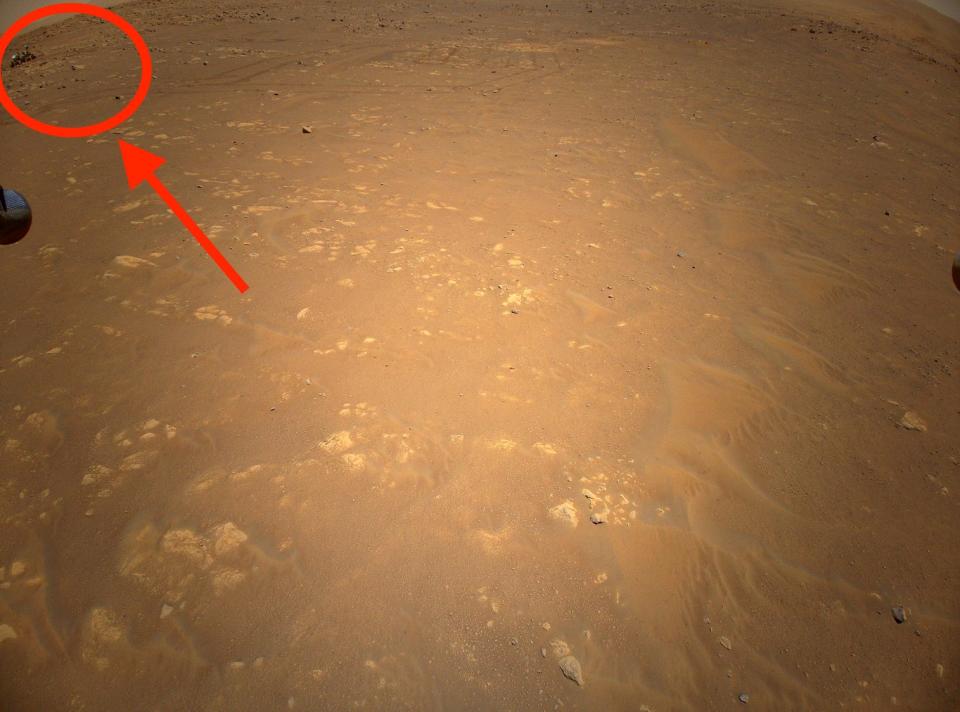
Ingenuity was flying at an altitude of 16 feet, and about 280 feet from the rover, when it snapped the picture.
After Ingenuity takes off for a fifth time next week, the Perseverance rover will stop watching the helicopter's exploits.
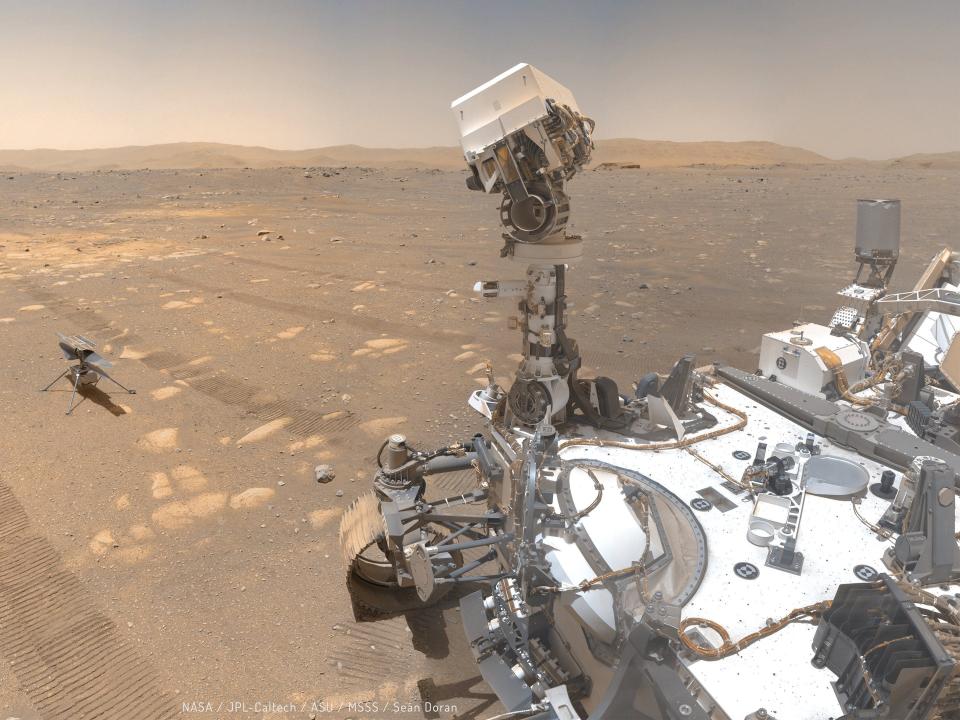
The rover will start the main part of its Mars mission: searching for signs of ancient microbial life. Perseverance won't venture too far from Ingenuity over the next month, though, so that NASA can continue to communicate with its helicopter.
This story has been updated with new information.
Aria Bendix contributed reporting.
Read the original article on Business Insider

